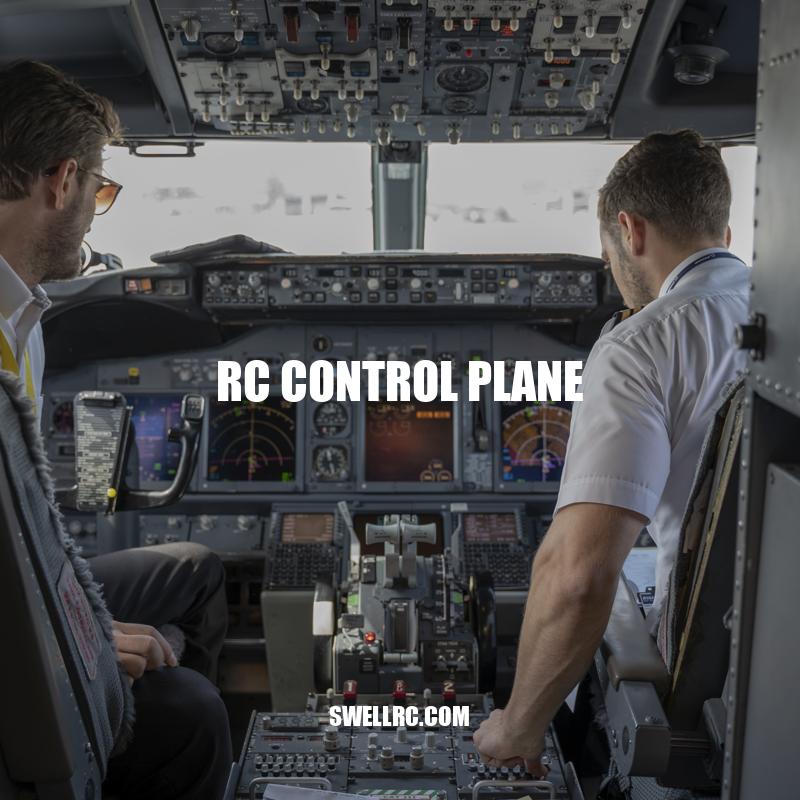RC Control Planes: Flying Fun and Tips for Maintenance
Remote control planes, commonly known as RC planes, are miniature model aircraft that allow flying enthusiasts and hobbyists to experience the fun of flying without even leaving the ground. These planes come with an electric motor and are powered and flown using remote controllers. They are designed to mimic real-life planes, and as such, come in different shapes, sizes, and models. The history of RC planes dates back several decades to when they were used for military training purposes. However, over the years, they have become popular among hobbyists and flying enthusiasts and are now widely available in the market at an affordable price range. RC planes are designed to suit a wide range of skill sets and interests, and the advancement in technology has made it easier even for novices to enjoy them. They are often used to learn and sharpen one’s flying skills and to perform stunts and tricks in the air. Nonetheless, it is important to handle these planes with care to curb risks and accidents.
Types of RC Control Planes
RC planes come in different types to cater for various interests and skill sets. The following are the most common types of RC planes in the market:
- Sport RC Planes – designed for speed and agility, making them ideal for pilots interested in performing stunts and tricks in the air. They are highly maneuverable and can fly at high speeds up to 150+ mph. Examples of sport planes include Red Bull F4U Corsair and the Ultimate Bi-Plane.
- Scale RC Planes – replicas of real-life planes, specially designed for those who want to experience the thrill of flying an actual plane. They come in different sizes and shapes, and an individual can choose to fly different types of planes, including vintage World War II planes, commercial planes, helicopters, and jets. Examples include P-51 Mustang, Boeing 747, and Bell 206 Jet Ranger.
- Aerobatic RC Planes – designed for advanced pilots who have mastered the art of flying and want to perform complex aerial stunts. These planes have high maneuverability and are specially designed to perform stunts. Examples include Carbon-Z Yak 54, Extra 330SC, and Ultimate 20-300.
It is important to note that the above types of RC planes are just a few of the many models available in the market. Before purchasing an RC plane, it is necessary to research and determine which plane suits your interests, skill level, and the type of flying you want to do. Numerous websites, such as HobbyKing, Amazon, and Motion RC, have made it easier for individuals to shop for the best RC planes that represent the value of their money.
What are the different types of model aircraft?
There are three types of model aircraft: scale, semi-scale, and non-scale. Scale models are exact replicas of real aircraft, while semi-scale models are close representations. Non-scale models are completely made-up designs. The type of model chosen depends on personal preference. Radio control (RC) is often used to remotely control model aircraft. For more information on RC systems, visit the Radio Control Wikipedia page.
Flying an RC control plane can be an exciting and fulfilling experience for those interested in remote-controlled aviation. Here are the essential steps to follow when flying an RC plane:
- Read and understand the manual: Before flying your RC plane, it is essential to read the instruction manual provided by the manufacturer. The manual contains important information on how to operate the plane, including how to connect the plane with the remote controller and how to calibrate the plane.
- Check the location: Choose a clear and open location, free from trees, buildings, or crowds. Ensure you are complying with all laws and regulations related to flying RC planes in the location you have chosen.
- Charge the battery: Ensure the battery is fully charged before takeoff. Over-discharged batteries can cause the plane to malfunction and even crash.
- Start the engine: Once you have set up the plane and remote controller, gradually start the engine while maintaining a good altitude and flight path, using the ailerons and elevators to keep the plane aligned.
- Fly the plane: Utilize the control sticks to maneuver the plane, keep the plane within the range of the remote controller, and avoid flying too high, as this may cause the plane to crash.
- Landing: When it is time to land, gradually slow down the engine while maneuvering the plane to descend slowly. Control the speed and direction of the plane, so it lands smoothly and safely on the ground.
It is also interesting to note that some RC planes come equipped with advanced features such as first-person view cameras that enable the pilot to see the plane’s movements through a monitor. These monitors can simulate a real-life experience and enable pilots to fly their planes in remote areas. Websites such as Flite Test, Horizon Hobby, and RC Groups provide detailed tutorials on how to fly and maintain RC planes, as well as offer various products and accessories for remote-controlled planes.
How do you fly an RC plane for the first time?
Flying an RC plane for the first time can be exciting yet nerve-wracking, but with a few basic steps, you can get off to a good start. First, choose an open space with no obstructions or people around. Next, ensure that the batteries are charged, and the controls are working correctly. Start with small, gentle movements and avoid jerky actions. A helpful tip is to keep the plane close by and low to the ground at first. Practice makes perfect, so keep practicing and have fun! For more information, check out websites such as RCGroups, FliteTest, or products like the RealFlight simulator for practice before flying.
To keep an RC control plane in good working condition, regular cleaning and maintenance are crucial. Here are some tips on how to take care of an RC plane:
- Store the plane correctly: Always store your RC plane in a safe and dry place. Avoid leaving it in a damp or humid location, as this can cause the electronic components to corrode.
- Clean your plane: After every flight, use a soft cloth to wipe off any dirt or debris from the plane’s surface. This will prevent the accumulation of grime, which can interfere with the plane’s performance.
- Check the battery: Ensure that the plane’s battery is fully charged and avoid over-discharging it, as this can cause irreversible damage to the battery and possibly the plane itself.
- Inspect the components: Regularly check the plane’s components, such as the motor, propeller, and landing gear, for any signs of wear and tear. Replace any damaged or faulty parts immediately.
- Keep the plane well-tuned: After several flights, it is essential to check and tune the plane’s functions, such as the control surfaces’ alignment and the plane’s balance. This helps to maintain the plane’s stability and prevent accidents.
Additionally, some websites offer products and accessories that can help extend the life of an RC plane and improve its performance. For example, websites such as HobbyKing and Motion RC offer a wide range of parts and accessories for RC planes, such as batteries, chargers, and propellers. In contrast, websites such as Amazon and Walmart offer complete RTF (Ready To Fly) planes and kits that include everything needed to get started, including a remote controller, battery, and charger.
How do you clean RC planes?
Cleaning RC planes can help maintain their performance and appearance. The first step is to remove the battery and disconnect any electrical components. Then, use a soft cloth or sponge with mild soap and water to clean the exterior and interior surfaces, avoiding any electronic parts. Avoid using strong chemicals or abrasive materials that can damage the RC plane. Allow it to dry completely before reassembling and storing it properly. For more detailed instructions and visual guidance, you can refer to this tutorial video on YouTube: https://www.youtube.com/watch?v=VlP0DVFZb90.
Conclusion
Flying an RC control plane is an exciting and engaging hobby for all ages. It provides an excellent opportunity for aviation enthusiasts and hobbyists to explore the fun world of flying. With a wide range of RC plane types available in the market, anyone can choose the right type of plane to match their flying experience level and interest. To ensure the safety and longevity of your RC plane, always maintain it and clean it regularly as well as inspecting the components for any signs of wear and tear. Keep the battery always charged to avoid over-discharging to prevent unnecessary damages to your RC control plane.
In conclusion, an RC control plane is a hobby that is both fascinating and thrilling; it can provide a source of fun and entertainment while also enhancing the learning of practical skills such as hand-eye coordination. Whether you are seeking to fly for fun or to compete, there is an RC plane out there that will match your needs. With proper care, an RC control plane can last for several years, providing endless hours of enjoyment.



